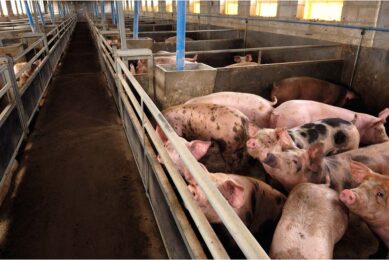The story behind Canada’s controversial food guide

Agricultural organisations recently responded with severe criticism to Canada’s Food Guide, reviewing the nutritional recommendations for humans. It’s not the first time science appears to favour a move toward more plant-based proteins. Now let’s take the other perspective: why was the guide drafted the way it was?
It’s hard for anyone to say how much the food guide of any particular country (if it has one) impacts the dietary choices of its population. It does seem, however, that food guides just might be more relevant than ever, as consumers strive with varying degrees of success to make dietary decisions in today’s internet-based world.
As it states in an explanation of the ‘Wheel of Five’ food guide of the Netherlands, consumers nowadays “are constantly being confronted with nutritional information. These range from proven health claims to those that are entirely unproven, and from the basic principles of nutrition to new findings from animal studies. It is difficult for consumers to work out whether or not they need to modify their eating habits. Reliable, scientifically-substantiated information on nutrition and useful recommendations are needed.”
Update of Canada’s Food Guide
Canada’s Food Guide was recently updated, and as with other food guides around the world, it was revised first and foremost using the newest nutritional study findings. The revision was completed by a multidisciplinary team at Health Canada that included researchers, policy experts, registered dietitians and communications specialists.
The revision process itself is described as ‘deeply meticulous’ and ‘based on established methods for developing population-based dietary guidelines’, according to Dr Catherine Mah, ‘Canada Research Chair’ in Promoting Healthy Populations and an associate professor in the faculty of Health at Dalhousie University in Nova Scotia, Canada. She studied the revision process, but was not involved in drafting it.
Dr Mah says, “The best available nutrition evidence, and its strength, was continually weighed, against the potential for promoting population health and preventing diseases.”
Prevention of serious health issues was the foundation of the revision of Canada’s Dietary Guidelines, confirms Health Canada spokesperson Geoffroy Legault-Thivierge. “Obesity and chronic diseases are major public health issues in Canada; 2 in 3 adults and 1 in 3 children are overweight or obese, while 2 in 5 Canadians live with 1 of the 10 most-common chronic diseases, such as heart disease, type 2 diabetes or cancer.”
Poor diets as cause of death and disability
Indeed, Dr Mah points out that poor diets are “a leading cause of death and disability globally,” a reality that in her view requires an approach to revising Canada’s food guide “that is right for Canadians, while taking into account that today’s biggest public health challenges, and their root causes, are issues that we share in common with other countries.”
The most recent update to Australia’s food guide for example, was made recognising that “many of the health problems in Australia today are linked to poor eating habits. Too many people eat too much saturated fat, added salt, added sugars and alcohol.”
The aforementioned explanation of the Netherlands’ ‘Wheel of Five’ food guide states that poor diet choices (along with being overweight and smoking) are likely to lead to a rise in the number of people having chronic diseases to 7 million by 2030.
Revision process
In revising the guide, Health Canada used the same methodology used in the 2015 Evidence Review for Dietary Guidance: Technical Report and the process was summarised in a document called Food, Nutrients and Health: Interim Evidence Update 2018. In addition to typical chronic diseases/conditions identified in 2015 (cancers, cardiovascular diseases, obesity, osteoporosis, and type 2 diabetes) the following new factors were recognised as public health concerns to be addressed: all-cause mortality, metabolic syndrome and oral health.
The 2018 update also recognised that since 2015, the ‘overall amount of credible evidence’ on diet and health had increased, but that most of the new evidence ‘re-affirmed Health Canada’s understanding of food, nutrients and health relationships’.
For example, diets high in soy protein are associated with lower low-density lipoprotein (LDL) cholesterol, and diets with processed meat intake are associated with increased risk of colorectal cancer. However, some associations were changed. For example, the association between dietary fibre and decreased risk of colorectal cancer, and red meat intake and increased risk of colorectal cancer, went from being ‘convincing’ in 2015 to ‘probable’ in 2018.
Different approach
“Through our consultations and research,” adds Mr Legault-Thivierge at Health Canada, “we learned that previous versions of the Food Guide were difficult to apply in daily life, so we took a different approach this time.” In addition to a systemic investigation into nutritional science (see here for more), “Health Canada considered feedback from public consultations, input from experts, and focus testing with the public and health professionals to ensure that the new Food Guide was relevant and useful to Canadians.”
Mr Legault-Thivierge explains that all agri-food stakeholders, which included farming groups as well as manufacturers and processors, were provided the opportunity to comment on the Food Guide revision through 2 online public consultations open to all stakeholders. This time, because “it was important to ensure that the development of dietary guidance was free from conflict of interest,” Mr Legault-Thivierge says “officials from Health Canada’s Office of Nutrition Policy and Promotion did not meet with representatives from the food and beverage industry.”
Dr Mah puts it this way: “For the first time in the guide’s history stakeholders from the food and beverage industry were required to share the same public platform for offering input as any other citizen… By my reading, this was a level playing field.”

Historic changes in the Food Guide
Despite urging in the opposite direction from various ag groups, 2 historic changes were made to Canada’s Food Guide.
- The 4 food groups (milk and milk products, meat and alternatives, grain products and fruits and vegetables) that have been in the guide since its inception in 1977, has been reduced to 3.
- Dairy products are now included in the ‘protein’ food group, which was previously ‘meat and alternates’.
When asked about these changes, Dr Mah notes that “the guide reminds us that large amounts of protein are not necessary to meet nutritional needs. We are advised to choose plant-based proteins more often, because they typically contain more fibre and the evidence shows that they can be protective of heart health.”
“Plant-based proteins are encouraged,” adds Mr Legault-Thivierge, “because eating more vegetables and fruit is linked to a lower risk of cardiovascular disease, eating more nuts or soy protein is linked to improved blood lipid levels, and the higher fibre intake of plant-rich diets is linked to improved blood lipid levels and a lower risk of cardiovascular disease, colon cancer, and type 2 diabetes. [In addition], processed meat has been linked to colorectal cancer, and foods that contain mostly saturated fat are linked to unfavourable blood lipid levels and a higher risk of type 2 diabetes.”
Protein categories
Taking a look at other countries, like Canada, the Australia food guide has a ‘protein category’ that lists lean meats and poultry, fish, eggs, tofu, nuts and seeds and legumes/beans. The Netherlands ‘The Wheel of Five’ also has a protein category described as dairy, nuts, fish, legumes, meat and eggs. The general recommendations include “less meat and more plant-based food,” to “switch between fish, pulses, nuts, eggs and vegetarian products,” and to eat “sufficient dairy products.”
In the UK, the explanation of the ‘Eatwell plate’ food guide states that plant-based protein sources such as beans, peas and lentils “are good alternatives to meat because they’re lower in fat and higher in fibre and protein, too.” UK residents are advised to choose lean cuts of meat, less red and processed meat like bacon, ham and sausages, and to strive for at least two portions of fish per week, one of which should be oily, such as mackerel.
Reaction from ag groups
In reaction to the Canada Food Guide revision, released in late January, Rick Bergmann (chair of the board at Canada Pork) stated that “we are concerned that Canadians might interpret this new version as a recommendation to reduce meat consumption in favour of plant-based proteins.” The Canadian Cattlemen’s Association stated that in this revision, “Health Canada missed an opportunity to inform Canadians on the nutritional benefits of eating lean beef as a protein source. It would be unfortunate if Canadians interpret this bias toward plant-based proteins as a signal to remove red meat from their diets.” Dairy groups were not pleased either.
When asked about the critical reaction from some farming groups to the greater emphasis on plant-based protein, some of Dr Mah’s comments are “I think it is important to emphasise that the reception for the new guide has largely been positive.”
She notes that plant-based proteins had already emerged as an area of food industry innovation well before the guide was released, and reminds again of the serious public health challenges that exist.
She believes an ‘important next step’ for the food sector and those who work within it, “will be to develop complementary guidance, tools, organisational policy, and programme supports for a wide variety of different users to bring the guide to life in their everyday work.”
Join 18,000+ subscribers
Subscribe to our newsletter to stay updated about all the need-to-know content in the pigsector, three times a week. Beheer
Beheer










 WP Admin
WP Admin  Bewerk bericht
Bewerk bericht